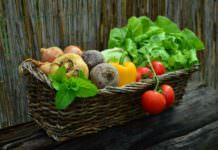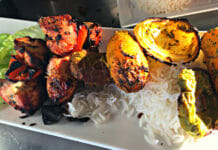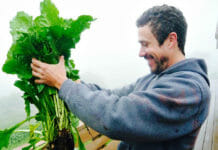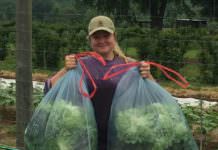There are lots of things to like about this time of year. Nice weather (recent 100 degree days excluded), baseball, summer vacations, fresh veggies and herbs from the garden. In my mind, though, the true taste of summer is a fresh, ripe, juicy tomato.
Give me a shaker of salt and set me in a tomato patch and I’m a happy boy. I know that many of you agree with me. But these fruits (botanically, they’re fruits, not vegetables) haven’t always been favorites.
In the 16th Century, botanists thought tomatoes were poisonous because they’re a member of the nightshade family. This unfortunate belief continued in America long after Italians disproved it by making tomatoes a staple of their cuisine.
 In fact, it wasn’t until 1848 that the tomato was first mentioned in an American cookbook. And that was only to describe how to temper its taste. Luckily, some brave folks finally started eating them and realized that tomatoes are far from unhealthy.
In fact, it wasn’t until 1848 that the tomato was first mentioned in an American cookbook. And that was only to describe how to temper its taste. Luckily, some brave folks finally started eating them and realized that tomatoes are far from unhealthy.
Today we know that besides great taste, tomatoes are filled with Vitamins C, A, B6 and E, among other things. In addition, loads of studies show that the more tomatoes and tomato products that people eat, the lower their risk of many kinds of cancer. Tomatoes contain lycopene, the cancer-fighting chemical that gives them their red color. Cooked tomatoes—including ketchup, tomato sauce, etc.—have even more lycopene, since cooking breaks down cell walls and releases the chemical.
Round red tomatoes are only the beginning of the varieties of these tasty fruits. Salad tomatoes are small to medium in size and are not very juicy—perfect for a salad. Slicing tomatoes are large and full of juice. Currant tomatoes, the closest we can find to wild tomatoes, are grown in South America and are very tiny and ultra sweet. Cherry, pear and grape tomatoes are plentiful in the US and are delicious in a salad or eaten out of hand. Plum (or Paste) tomatoes, such as the Roma, are meaty and firm and are favorites of sauce makers all over the world.
 Heritage or Heirloom tomatoes are becoming more available these days. They’ve been cultivated from plants of the past—before cross-pollination spoiled their uniqueness. You’ve seen the results at the farmers’ markets—tomatoes in a rainbow of colors like red, orange, purple, yellow, green and more. Many have stripes or swirls of colors to make for a beautiful presentation on your summer table.
Heritage or Heirloom tomatoes are becoming more available these days. They’ve been cultivated from plants of the past—before cross-pollination spoiled their uniqueness. You’ve seen the results at the farmers’ markets—tomatoes in a rainbow of colors like red, orange, purple, yellow, green and more. Many have stripes or swirls of colors to make for a beautiful presentation on your summer table.
For best results, tomatoes should be left on the vine as long as possible. They ripen after picking, but their sugars don’t continue to develop, so taste won’t improve. When choosing a tomato at the market, pick firm, brightly colored fruits that feel heavy for their size. They should also have a nice “tomatoey” smell to them. (Avoid those tasteless red balls sold in supermarkets as tomatoes during the off-season. They’ve been shipped from who-knows-where, been artificially ripened and picked before any flavor develops. Use canned out of season.)
Once you have the tomato, store them on the countertop with the stem side down. This helps to prevent moisture from escaping and mold and bacteria from entering. They should last about a week stored like this. Never store tomatoes in the refrigerator. Cold will make the taste deteriorate and turn the flesh mealy.
As for recipes, I have to say that my two favorite tomato dishes are as simple as it gets. The first is a BLT—good smoky bacon, thick juicy tomato slabs, crisp lettuce, mayo and a little salt and pepper on some good toasted bread. The best sandwich ever.
 For something a little lighter and absolutely delicious, I go with a Caprese Salad. There really are no rules. You can slice or dice, stack or layer—whatever you want. Tomatoes, fresh mozzarella, fresh basil, salt, pepper and the best extra-virgin olive oil you can get your hands on. Truly the taste of summer.
For something a little lighter and absolutely delicious, I go with a Caprese Salad. There really are no rules. You can slice or dice, stack or layer—whatever you want. Tomatoes, fresh mozzarella, fresh basil, salt, pepper and the best extra-virgin olive oil you can get your hands on. Truly the taste of summer.










![What we’re reading [Oct 16 2017]](https://www.buckscountytaste.com/wp-content/uploads/2017/10/coffee_macbook_reading_pexels-photo-414630-218x150.jpeg)

